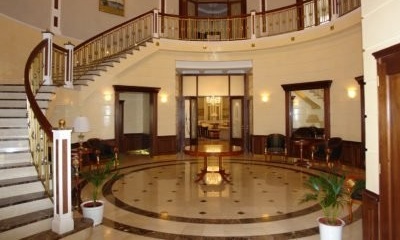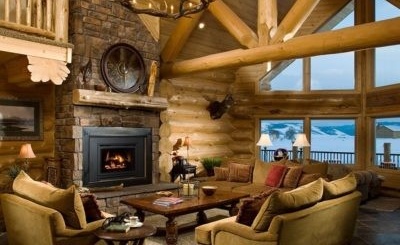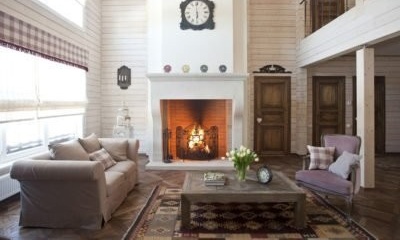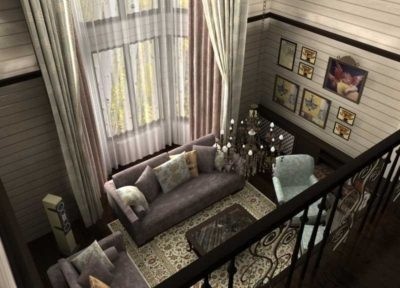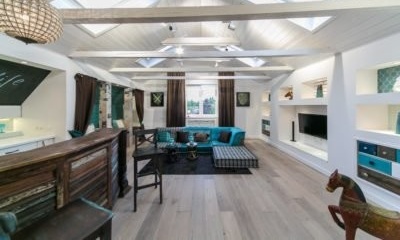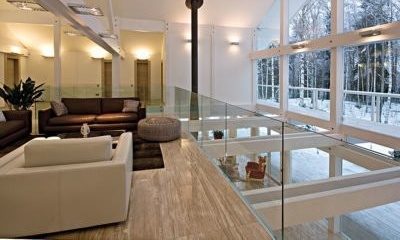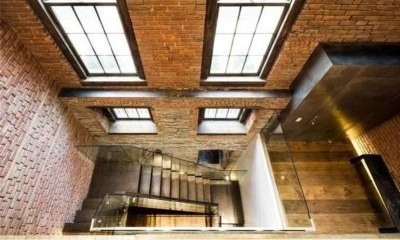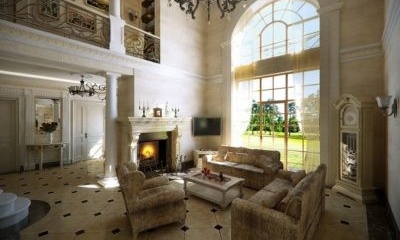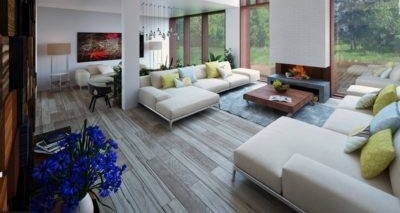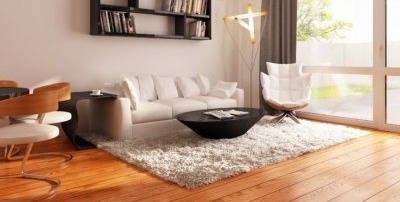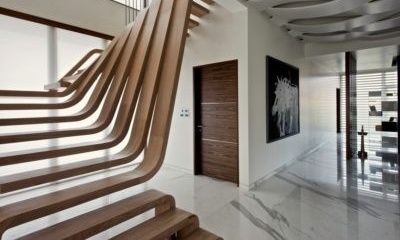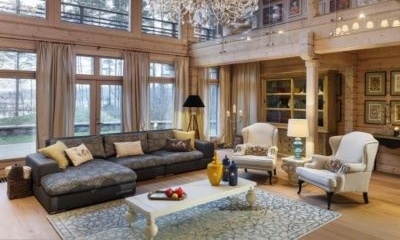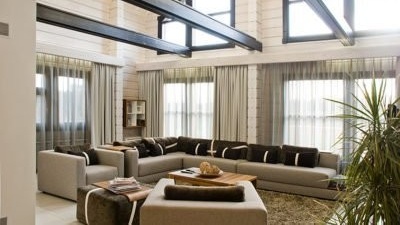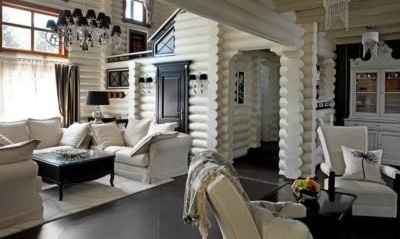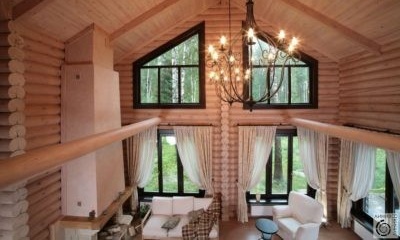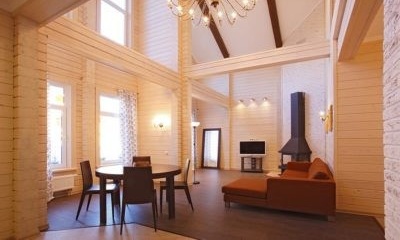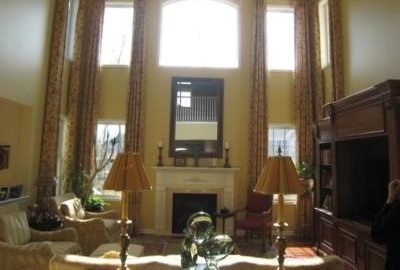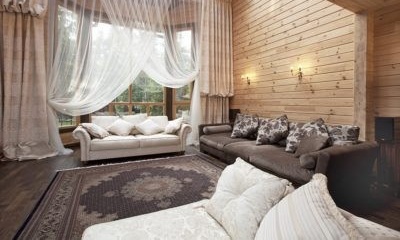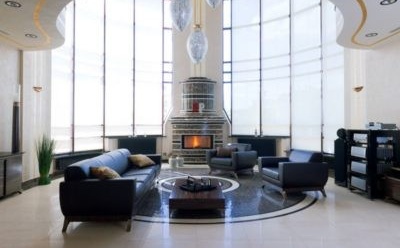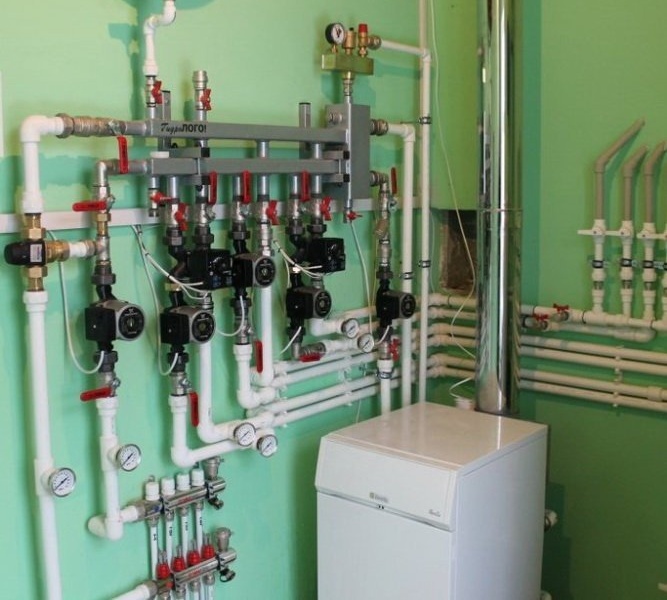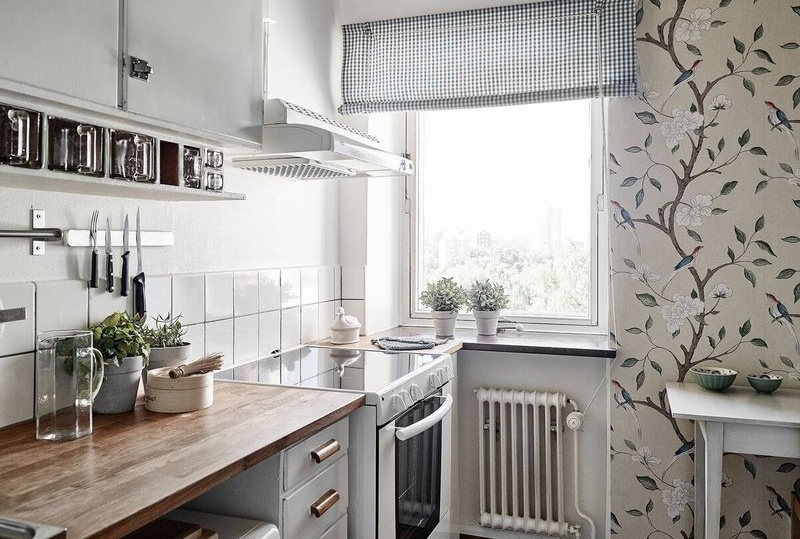The second light in the house is an architectural technique for expanding the space in the interior

Tired of the low ceilings of small-sized standard apartments, which homeowner does not want to have a room with panoramic glazing in his house to admire the surrounding landscape at any time of the year or through the roof windows to monitor the run of variable clouds? Rooms with a second light give such an opportunity.
Content
Double lighting: what is interesting for the interior and how to take advantage of the reception
The second light denotes multi-row glazing of space without interfloor ceilings; as a result, a large room is saturated with light. Initially, double light was used to illuminate religious buildings and palace halls, designed for the simultaneous presence of a large number of people. This technique was originally characteristic of industrial architecture, and only with the development of individual housing construction did it become actively used in housing.
The second light in the house: interesting design ideas (photo inside)
A room with second lighting more often becomes a common room, on the second level of which there is a gallery with exits to the rooms of family members. The staircase, which is located in the common room or outside, connects the two levels of the room.
A two-light room can be made into a hall, but this solution is more often used in public buildings: offices or hotels.
In a wooden house
In wood-rich countries, wooden houses have always been popular, eco-friendly, warm and relatively inexpensive. Over time, the popularity of wooden houses only increases, and a large number of them are being built with double lighting. Design features of wooden house building require spacers at the level of floors. In large-span rooms, spacers and open elements of the rafter system create dynamics, with their help zoning the space.
The windows of the second light are located in one plane in two or more tiers. In this case, the structural element - spacers will give the volume of the room additional dynamics and expressiveness.
Glazing is designed as a stained glass window, narrow and tall. The architecture of the room will be decorated with a bay window, and the glazing will bring the game of refracted light into the interior.
In brick
In brick houses, the layout of the rooms with the second light is solved similarly to wooden housing construction: windows can be located both in the wall plane and in the bay window. Skylights in the roof also give a second lighting in the interior.
The composition of the premises depends on the area of the room, the design of the ceilings and the roof. With large spans in the room there will be beams, wooden, reinforced concrete or metal. The material of structures is decided in a particular case. Beams and spacers set the rhythm for space.
Multi-level lighting is typical for industrial buildings. Now, when old industrial buildings are being reconstructed into loft-style housing, a multilevel complex building with a characteristic combination of brickwork, glass, concrete and metal is formed in the interior.
In spacious mansions there are examples of glazed arched shapes. The interiors in the style of classical estates of the XVII century nobility are distinguished by extensive space and sophisticated decor with gilding.
From SIP - panels
The sip panel (structurally - insulating panel) is, in fact, a sandwich of two layers of OSB board (oriented chipboard - replacing chipboard - wood - chipboard) and a layer of insulation - mineral wool, polystyrene foam or polyurethane. The layers are glued together under pressure. The material and technology for building houses from it came from Canada, so the houses built from it are often called Canadian.
Planning decisions of these frame houses, as a rule, are more modest than wooden or brick. At the cost of the house from SIP - panels belong to the economy class, they do not build luxury mansions on 3-4 floors from this material, more often they build small cottages and country houses.
But here there are two-lighted living rooms, with or without a bay window, with mansard or vertical glazing. The imagination of the architect from the most modest materials creates unique designs, in fact, which are art objects and adorn the "walk-through" interior.
From glued beams
Houses made of timber are popular among individual developers - they are attracted by precise geometry and a greater load-bearing capacity than a log house. The construction of houses is often rack-and-beam, which allows designing rooms with intermediate supports as a result of double-light rooms that cross the beams at the level of ceilings. It is up to the architect to beat them, turning them from lack to dignity.
One of the drawbacks of double-light rooms is often called an open space that does not fit the scale of a person. To make the room more comfortable, more home, you can highlight the design with contrasting light.
From logs
The modern technology of logging houses from logs simplifies the creation of spacious rooms. The bright illumination of the two-room hall emphasizes the expressiveness of the log walls.
Elements of spatial structures - beams and rafters, organically emphasize the natural beauty of wood and the scale of the interior.
Window decoration - curtain
Large windows require a special approach to curtains. For the living room, the curtains are selected in accordance with the style of the interior. It can be multi-layered classical curtains with hooks, tulle and lambrequins, Japanese panels or free curtains on grommets - the imagination is unlimited.
When the curtains close simultaneously two tiers of windows, they additionally emphasize the height of the room. With a small width of the living room, this technique violates the proportions of the room, and creates additional problems: you can only control these curtains remotely.
In the topic of window curtains, unusual solutions are sometimes found when the windows are left without curtains and the bay window with panoramic glazing is separated from the room by curtains.
A simple functional solution for large panoramic windows: remote control blinds, as in this semicircular bay window, match the style of the interior, are easy to use and maintain.
Second light: plus or minus?
The second light makes it possible to create an expressive interior, the advantages of such a solution are obvious:
- The insolation and illumination of the room increase;
- It is possible to install unique translucent structures - stained-glass windows or panoramic glazing;
- Fireplace device;
- The use of cascading lamps and chandeliers;
- Room decoration with tall plants, trees, shrubs, vines.
In addition to advantages, the second light has disadvantages that come down to financial costs in solving engineering issues:
- An increase in the glass area leads to heat loss and an increase in heating costs; the creation of comfortable conditions requires a competent heat engineering calculation of building envelopes and a heating system;
- Large-area glazing located on the sunny side will cause the room to overheat in the summer, and will require air conditioning and curtain control mechanisms;
- The quality of the window filling profiles and the design of the double-glazed windows should prevent heat loss through the glazing;
- The design and materials of the roof should ensure the absence of condensation and, as a consequence, mold and fungus.
Opinions are divided: second world reviews
Opinions about rooms with second lighting are divided approximately 50/50: in a professionally designed and well-built house there are no problems. It is another matter if the decision was made spontaneously and not technically worked out. Then the tenants themselves feel all the delights of the minuses, starting from electricity bills and ending with the problem of changing a light bulb or washing windows.
Designing a second light in a house is a purely aesthetic matter. It does not have any effect on the heat balance of the premises, with the correct heat engineering calculation. The forum constantly raises the issue of overheating of 2-3 floors and this, almost always, is a consequence of improper placement and power of thermal devices. The cost of such a calculation is several times less than the experimental approach. If you want to get a second light in the house, there are two important points to consider. The first is soundproofing.If the living room has a staircase with a lift to the mezzanine, with which the doors to the bedrooms are organized, then you get a common space where it will be difficult to retire. This is a good solution for guest (party) houses, for permanent residence of the family is poorly suited. If the volume of the house allows, then the staircase is placed separately from the living room, thereby isolating the guest and sleeping areas. Hence the second point, the house should be large enough. The second light not only creates additional opportunities in the interior, but also allows you to create an interesting facade architecture. If there are large (high) windows, the dominant parts of the building stand out, accents are created.
I have a second light. it looks gut with a fireplace but the house is small. therefore, places are a pity, of course, Heating. If you do not regulate the batteries, then in the fireplace room 22 (tolerant) and in rooms 24–25. But everything is decided by regulation. It is very difficult to pick up something like curtains on tall windows. I have roll translucent crap. But then the guests who say it for the first time - VAC !!!!
A friend in the house has a living room with a second light - the height to the ceiling is 6 meters. There are the following problems: From a high window with good double-glazed windows there is a constant stream of cool air; in the room a peculiar acoustics - from the TV noise throughout the house; problems with replacing light bulbs in the chandelier and washing tall windows. In general, I do not recommend
I was in the house with the “second light”, I didn’t feel the temperature drops. Divine sensations - a lot of air and natural light (literally). In addition, in the center of the space hung a long chandelier of individual fragments, which barely wavered from the movements of the air. Amazing!
My friends have a second light in the living room. I’m not very comfortable there. I don’t know how to explain ... There is no security or something. All the time the gaze rises. there is also a sloping ceiling. My house has a second light in the hallway. Those. you enter and you see the platform of the second floor, a sort of balcony. A staircase to the second floor is also in the hallway. Because the entrance hall is small, the second light "expands" the space.
Save
Comparing the pros and cons of architectural reception, the second light, you understand that the assessment rests on the financial component: the scale of the room increases the cost of heating, electricity and engineering systems. If the financial issue is not worth it, a double light will create a unique interior, emphasizing the viability of the owners of the house.
